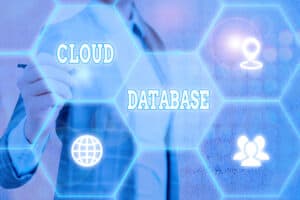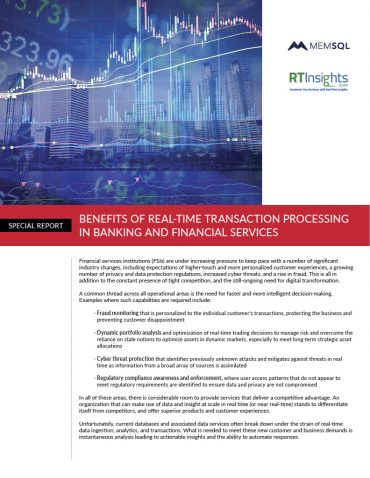
A majority of organizations have migrated databases to the cloud. Many cite increased demand for data analytics as the driver.
Whether it’s already in place, in progress, or planned, cloud database migration is front and center for IT professionals—from those writing code and configurations to those leading technology strategy at global enterprises. In fact, a recent Cloud Database Trends Survey from MariaDB found that 61% of IT professionals polled said their companies were either already fully migrated or working to complete their database migration to the cloud. Another 36% were partially migrated or working on a partial migration, with the remaining 3% in the planning stages. No respondent reported no migration activity or plans.
The survey targeted those in the know, DBAs (49%), developers using databases (35%), and IT Heads, including CTOs and CIOs (25%), all of whom had a role in the selection and management of database services or database software at their companies at the time of the survey. The vast majority (90%) represented medium to large businesses. Respondents’ views converged around some major topics in the database landscape, namely, the usefulness of multi-cloud deployments, a desire for solutions rooted in open-source, the need for a “powerful” database to handle the “explosion” of data, and certain benefits of database-as-a-service (DBaaS). But some views around security, analytics, automation, flexibility, and elasticity with respect to migration diverged according to the respondent’s job. As cloud database revenue soared to $39.2 billion last year and now constitutes more than 49% of all managed database revenue, according to Gartner, it’s worth digging into the survey findings, some expected, some considerably more surprising.
Wide agreement on multicloud capabilities
As companies migrate, the vast majority (90%) of the IT professionals surveyed agreed that it’s essential to choose a database vendor that supports multi-cloud capabilities. Not just a nice-to-have, but essential. Instead of locking into a single provider, a multi-cloud approach involves strategically using cloud services across several providers, typically the major public clouds or hyperscalers—AWS, Google Cloud Platform (GCP), Azure, Alibaba, IBM, and others, as well as private clouds. It’s a notion structured around choice to gain new efficiencies, just as hybrid approaches often are, which leverage cloud along with on-premises hardware for various workloads.
Some major enterprises are all-in on multi-cloud, and they’re talking about it. According to a recent article, Walmart confirmed that its major shift to multi-cloud was a strategic choice to save millions in IT costs—specifically, 10 to 18% in cloud spend. The “heart” of their multi-cloud architecture is an abstraction layer making it easy for developers to spin up resources in a cost-effective manner without thinking about it. Some analysts have begun calling this kind of architecture “supercloud.” Microsoft is also openly encouraging wider multi-cloud adoption among U.S. public sector agencies and contractors in an organized effort with Google, VMWare, and others in order to balance AWS’s dominance.
Today, databases must feature broad availability on every cloud to keep up with business needs and competitive innovation. And businesses in every vertical, of course, require databases. Multi-cloud database deployments are not only essential to government and its myriad vendors and big retailers like Walmart, but they’re also essential in financial services, an industry with both global reach and complex local compliance scenarios. As such, financial services cannot compromise around database scale, high availability, integrity, strong data consistency, and highly performant analytics (powered by columnar indexes or data structures). Putting more than one cloud to work can yield best results in every metric.
See also: You’ve Migrated to the Cloud, Now What? 4 Critical Cost-Saving Practices
Faith in open source is stronger than ever
Another area of major agreement on cloud database migration among IT professionals of every rank in the survey was support for solutions rooted in open-source technology. In fact, 90% agreed that they would be interested in using an open-source database to reduce costs, 83% would be willing to use an open-source database for a mission-critical project, and 74% agreed that it’s frustrating when they can’t access the source code of their database.
Companies that are formed by open-source creators and that continue to champion the benefits of open source—still contributing robustly to open-source projects—have a level of credibility that others often don’t. When these companies offer enterprise versions of databases or other services and various product enhancements, users get support from the source, from those who created the code. That level of insight and expertise is useful in complex deployments where the need to solve deep, in-the-weeds problems can arise. Hyperscalers deploying other people’s code with a layer of automation wrapped around it is tricky business. They might talk a good game, but do they have the skills to back up claims when the going gets tough?
Enterprise software from open-source advocates typically includes an array of licenses and integrations, and security enhancements. Businesses also want to consider whether there’s indemnification for customers, which isn’t a small detail but instead a differentiator when it comes to souped-up software born of open-source projects. The public sector, too, is increasingly keen on open source and avoiding vendor dependencies. Use cases involving geospatial capabilities and developer-focused, API-based work are common.
Powerful DBaaS for massive data and other differentiators matter
The survey revealed that 75% of IT professionals said their organization generates loads of data but fails to use it to the fullest advantage—and 80% think this data explosion makes having a powerful database more important than ever. In the $40B relational database market, the power to consolidate transactional and analytic workloads in one database is a must-have. The power to scale workloads up without limit to millions of transactions per second and back down fast, and to scale out across any clouds with the data still seen as one logical database, across dozens of availability zones and regions around the world, with strong consistency in ACID compliance, is a must-have—not a nice-to-have.
The survey uncovered organizational benefits of DBaaS as well, again with large majorities of IT pros sharing similar views. For example, 93% agreed that storing data across their organization in a single database helps with standardizing security protocols—notable since 85% of respondents use two or more databases. When it comes to saving the organization money, 88% agreed DBaaS would help. And when it comes to concerns around talent, 87% said that using DBaaS would help bridge the cloud skills gap and 90% said it would make their organization more competitive.
Notable differences of opinion among tech professionals exist
Stark differences of opinion about cloud database migration benefits and migration drivers surfaced in the survey based on job role. DBAs and developers were much more skeptical than CTOs and CIOs of higher security being a benefit, of data analytics being a driver, and of database automation, flexibility, elasticity, and customer support giving vendors an advantage. For example, 58% of IT Heads, including CTOs and CIOs, named higher security as a benefit of migration, but only 22% of DBAs and 26% of developers agreed with that.
In terms of what’s driving investment in cloud migration, a similar role-based difference emerged. Among the 43% who cited an increased demand for data analytics as a driver of investment, 55% of IT Heads saw higher demand for analytics as key, but only 37% of DBAs and 29% of developers felt that way.
Again, with database automation, 52% of IT Heads, including CTOs and CIOs, said it gives vendors an advantage, but the figure dropped to 35% of DBAs and 26% of developers. And the divide existed as to whether flexibility and elasticity give vendors an advantage: 52% of IT Heads named those, but only 28% of DBAs and 23% of developers did. Finally, with customer support, the same kind of tension existed yet again: 58% of IT Heads said it yielded a vendor advantage versus 22% of DBAs and 26% of developers.
Healthy skepticism and a degree of ambivalence are not new traits for developers and DBAs, who live day-to-day knee-deep in code and configuration. They grapple with buggy programs and broken deployments. Most don’t fall for the hype of the next shiny object—software package, platform, cloud service, or otherwise—knowing that even the best product iterations often aren’t fully baked. Software never escapes its bugs. Developers and DBAs want to know whether a solution is solving a real and pressing problem. They want to know that the maker is eating their own dog food. They’re not wrong. IT Heads and CTOs, on the other hand, rightfully study changes in technology and markets and know that they must look at the landscape in a holistic way and determine what’s shifting and why. It’s incumbent on organizations to respect both points of view and more and to find the right balance.
See also: 80% Organizations Had A Cloud Security Incident in 2021
No escaping fears and challenges
Finally, the survey uncovered challenges and fears associated with cloud database migration, many of which will feel familiar. “Worst nightmare” scenarios included failed database migration (46%), bad database documentation (38%), and bad schema design (36%). A majority (55%) of respondents also agreed that “there are legacy systems in their organization that nobody knows how to fix if they break.” Half (52%) said that “the database team is the first to be blamed when things go wrong,” and 48% said that “data replication is incredibly painful.”
Respondents said that data and cybersecurity (43%), increasing volumes of data (37%), and a lack of up-to-date IT skills and people (33%) are among the greatest data-oriented challenges their organizations face.
The need to restructure applications and databases to fit the cloud model (34%) was the greatest hurdle to smooth migration cited by IT pros. But they cited other hurdles too: lack of internal skills with cloud-based technologies (30%), a delay in cloud migration due to business concerns (30%), security concerns (27%), incompatible legacy IT setup (25%), and unforeseen problems once migration started (23%).
It’s clear from the attitudes and opinions of technology strategists, leaders, makers, and doers that cloud database migration is very much here and past the point of no return. That conclusion resonates with Gartner’s observations in April that the “biggest DBMS market story continues to be the enormous impact of revenue shifting to the cloud” and that the “unprecedented show of volatility” on the DBMS market leaderboard from 2017 to 2021 is worth keeping a close eye on.






























